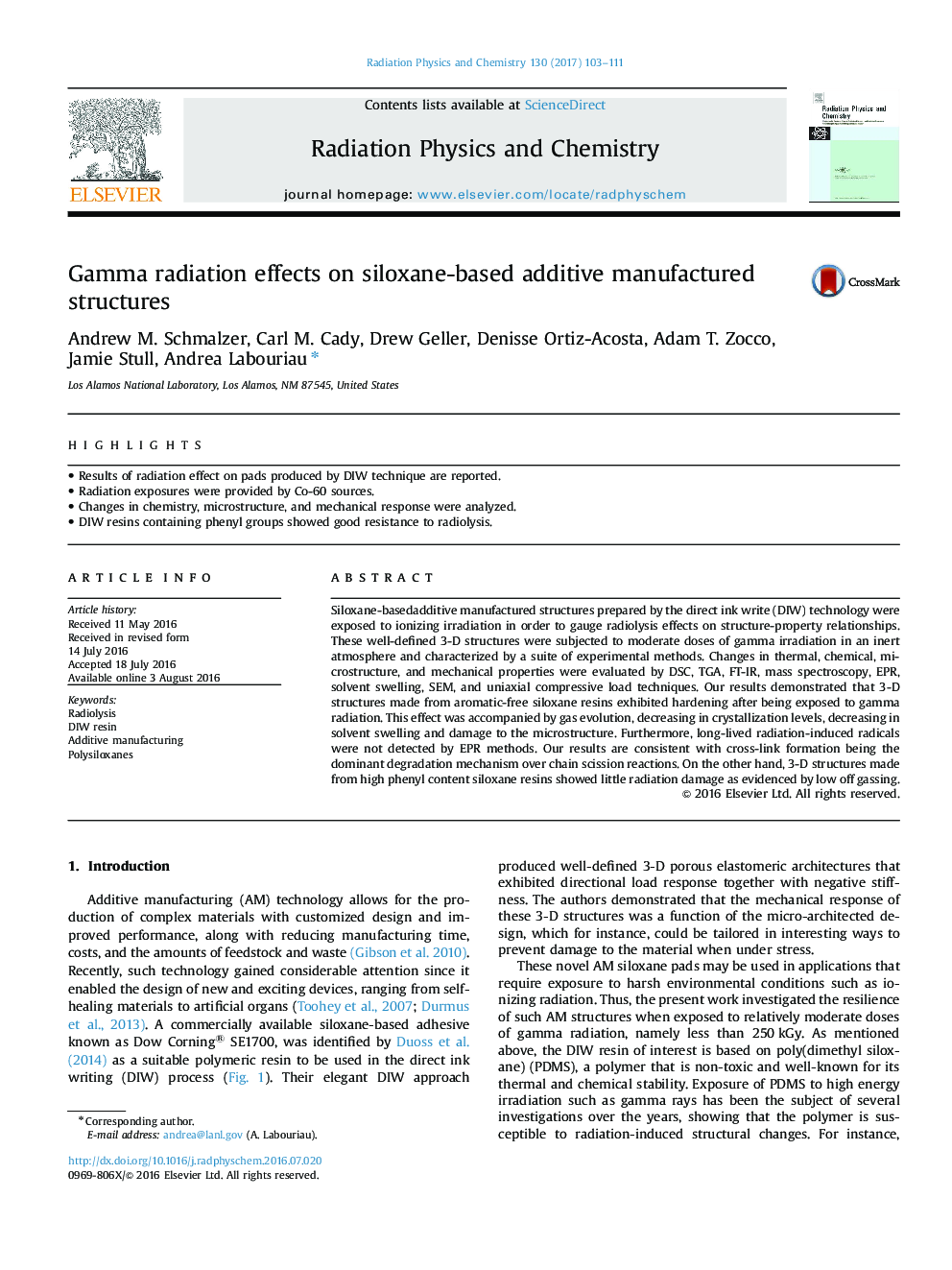| Article ID | Journal | Published Year | Pages | File Type |
|---|---|---|---|---|
| 1885734 | Radiation Physics and Chemistry | 2017 | 9 Pages |
•Results of radiation effect on pads produced by DIW technique are reported.•Radiation exposures were provided by Co-60 sources.•Changes in chemistry, microstructure, and mechanical response were analyzed.•DIW resins containing phenyl groups showed good resistance to radiolysis.
Siloxane-basedadditive manufactured structures prepared by the direct ink write (DIW) technology were exposed to ionizing irradiation in order to gauge radiolysis effects on structure-property relationships. These well-defined 3-D structures were subjected to moderate doses of gamma irradiation in an inert atmosphere and characterized by a suite of experimental methods. Changes in thermal, chemical, microstructure, and mechanical properties were evaluated by DSC, TGA, FT-IR, mass spectroscopy, EPR, solvent swelling, SEM, and uniaxial compressive load techniques. Our results demonstrated that 3-D structures made from aromatic-free siloxane resins exhibited hardening after being exposed to gamma radiation. This effect was accompanied by gas evolution, decreasing in crystallization levels, decreasing in solvent swelling and damage to the microstructure. Furthermore, long-lived radiation-induced radicals were not detected by EPR methods. Our results are consistent with cross-link formation being the dominant degradation mechanism over chain scission reactions. On the other hand, 3-D structures made from high phenyl content siloxane resins showed little radiation damage as evidenced by low off gassing.
